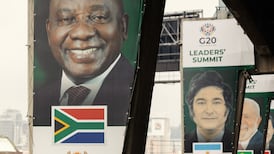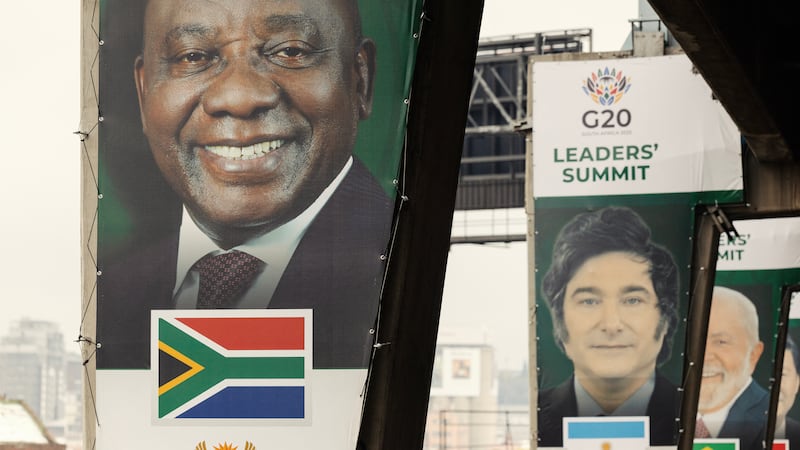European leaders are desperately trying to buy Ukraine more time to work out a new ceasefire framework with Russia after the Trump administration imposed a Thanksgiving deadline, with top US officials hammering the point that this is turning into an ultimatum.
President Volodymyr Zelenskiy and leaders in France, Germany and across Europe are rushing to respond to US demands that Ukraine agree to the 28-point plan circulated this week by next Thursday. Their approach, according to people familiar, is careful: how to essentially rewrite much of the document but present it as constructive updates.
In a sign of the panic setting in, German chancellor Friedrich Merz rushed to pick up the phone to president Donald Trump to agree to more discussions in coming days at the level of national security advisers.
That would normally mean the involvement of Marco Rubio, who holds that job as well as secretary of state, but the role could fall instead to secretary of the army Dan Driscoll, according to people familiar with the matter.
Mr Driscoll briefed European ambassadors earlier this week that a deal had to be done sooner rather than later, said the people who spoke on condition of anonymity to discuss private conversations. He told the envoys that Ukraine was in a bad position and now was the time for peace, the people said. He added that president Trump wanted a peace deal now.
The US president seemed to take a tough line when asked late on Friday about the issue. If Ukraine does not agree, he appeared ready to wash his hands of the conflict. As an enforcer of that message, Mr Driscott bluntly told them he was not there to negotiate on the details.
“He’ll have to like it – and if he doesn’t like it, then, you know, they should just keep fighting I guess,” Mr Trump said, adding of Mr Zelenskiy that “at some point he’s going to have to accept something.”
Yet Mr Trump also indicated some flexibility with the timeline, saying in a Fox News Radio interview on Friday morning that while he sees November 27th as an appropriate point for a decision, “if things are working well, you tend to extend the deadlines.”
Attention will now shift to the sidelines of the G20 in Johannesburg, South Africa, on Saturday, where European leaders will map out next steps, a person familiar with matter said earlier.
“Europe has been trying really hard to come up with this solid and unified stance on this. And I think what this plan potentially does is throw all that effort to the wind and create a scenario where Europeans really have to go back to the drawing board,” said Rachel Rizzo, a non-resident senior fellow at the Atlantic Council’s Europe Center.
The plan floated by US and Russian envoys would force Kyiv to cede large chunks of territory taken by Russia, cap the size of its military and see sanctions on Moscow lifted over time.
Under the plan, a copy of which was seen by Bloomberg News, the Ukrainian regions of Crimea, Luhansk and Donetsk would be “recognised as de facto Russian, including by the United States,” Ukraine would also be required to hold elections in 100 days, give up any hope of Nato membership and slash the size of its armed forces.
The US has threatened to cut all military and intelligence support to Ukraine if it does not agree to a deal by next Thursday, the people said.
But as the initial shock of the plan faded on Friday, some officials argued it was a repeat of the past when Mr Trump put forward a demand, Mr Zelenskiy and Europe resisted, and the US president backed off.
One European official, who asked not to be identified discussing private deliberations, said it was not the first time Mr Zelenskiy has found himself in a difficult spot with Mr Trump. The official argued that new US sanctions are coming into force and while Ukraine is in a tough situation, it continues to strike targets deep in Russia and inflict heavy casualties on Russian forces.
Others are more pessimistic and believe the very foundations of the transatlantic alliance and security order are at stake.















